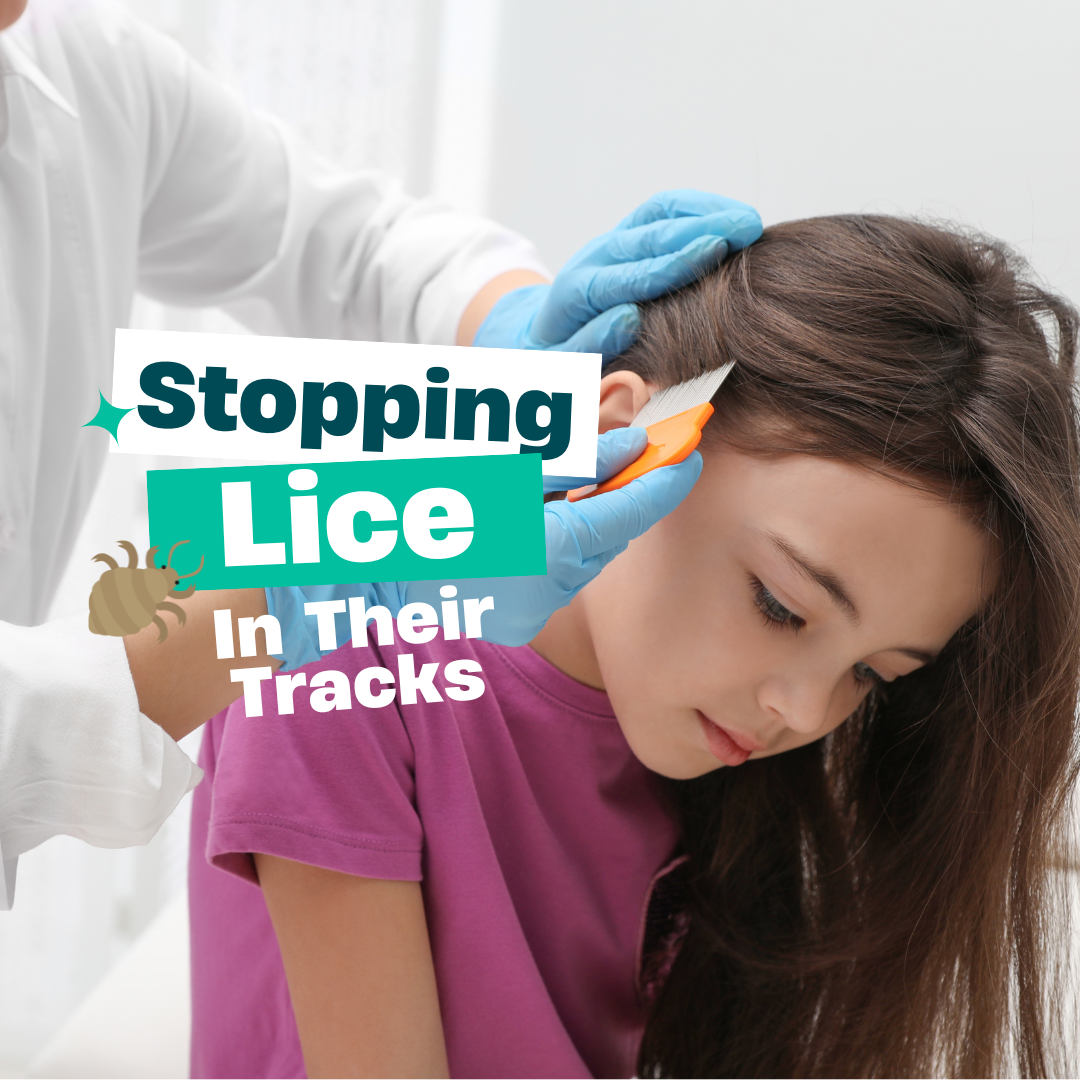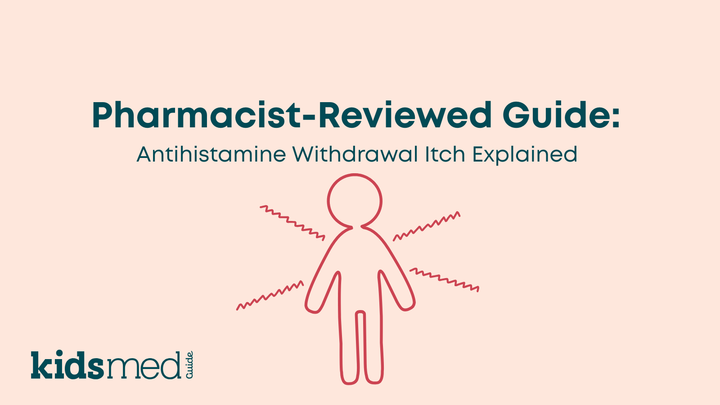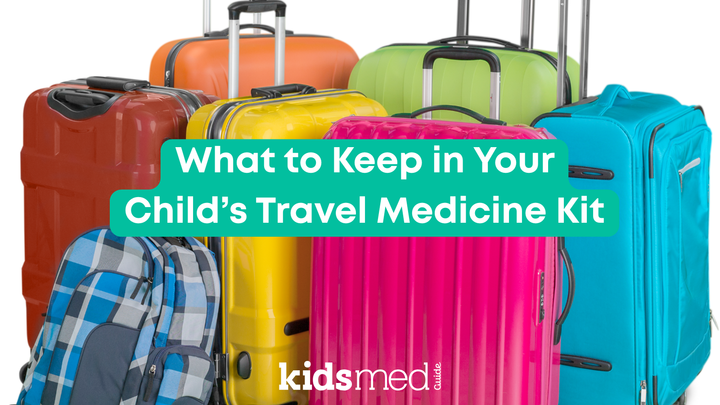Treating Head Lice in Kids

Question: You get an email from the school nurse saying there is an outbreak of head lice in your child's classroom. Should you:
A) Shave your child's head and slather them in mayonnaise
B) Burn all of your possessions and live off the land
C) Move out
D) Keep calm and read our KidsMedGuide tips
Answer: D, of course! Although option C is tempting...
Unfortunately, this is a real-life scenario I was lucky enough to experience this week: a notification about head lice in elementary schools. Hooray.
What is Head Lice?
Head lice have been around since the dawn of time. They are known by the scientific term Pediculus humanus capitis. They're known by the parenting term, "Oh crap, please, no, I don't want to deal with this."
Head lice are tiny insects that live on the human scalp and feed on small amounts of blood. Gross, right? The saliva from lice causes itching and discomfort, but they are not harmful and do not transmit disease.
A head lice infestation is NOT an indicator of a child's hygiene or home cleanliness. I repeat.
Head lice does not mean your child or family has poor hygiene.
It's just one of those unfortunate things that happens!
How does Head Lice Spread?
The primary way that head lice spreads from person to person is through direct contact. Think elementary school kids lying on the rug together, head to head, reading books. Or siblings snuggling on the couch. Or kids watching movies at a sleepover. That kind of thing! It's important to note that lice cannot fly or jump; they only crawl.
Less often, lice can spread through contact with an infected person's items, like a comb or hat. Lice cannot survive off of the scalp for more than 1-2 days, so while transmission via objects is possible, it's not as likely.
Identifying Head Lice
Interestingly, itchiness usually doesn't start immediately the first time a person is exposed to head lice. Itchiness is caused by lice saliva (even grosser) irritating the scalp. The average infected person must become sensitized to lice saliva, which takes a while, usually about 4 weeks.
While itchiness is a red flag indicator of head lice, it might not be present immediately. Therefore, if you suspect lice or are on the lookout (see classroom outbreak situation above), you should regularly inspect your child's scalp and hair shafts for visible lice or nits.
Live lice are tiny, about the size of a sesame seed. They can be tan or gray. They move fast because they avoid light. They also love scalps, so lice aren't likely to crawl off the head unless they try to crawl onto another head. Live lice are hard to spot but tend to like the area behind the ears or at the base of the head by the neck.
Lice eggs, or nits, are easier to see. They look like tiny eggs glued to the hair shaft. Lice eggs are sneaky and may be able to camouflage into the hair via pigmentation that matches hair color. Live nits that have yet to hatch are very close to the scalp and usually pigmented in color. Dead nits that are empty and do not have a baby louse inside are generally clear and further away (2 cm or so) from the scalp. Dead nits are not contagious, nor do they indicate an active infection.
To check for live lice or nits, use a fine-tooth comb to part the hair in super-small sections and look closely at the scalp and hair shaft. Consider using a magnifying glass to get an up-close look. Many pictures are available online about what lice and nits look like against various hair and scalp colors, so I won't gross you out with pictures here. Peruse at your own risk!
Can you Prevent Head Lice?
Much information and misinformation regarding preventing head lice infections is available online. I caution parents to only use products specifically approved by the Food and Drug Administration (FDA) for treating lice when there is a confirmed infection and to speak with their pediatrician or pharmacist if they have questions about prevention or treatment products.
There are no proven prevention methods besides avoiding head-to-head contact with others and not sharing or storing personal items like hats and brushes close to other people's items.
There are many products available that claim to repel lice. Unfortunately, no extensive, robust clinical studies prove that lice-repelling products work. Some small studies or reports, mostly in adults, suggest that certain substances or chemical compounds may repel lice.
However, none of these products have been FDA-approved, nor are the manufacturers subject to compliance with quality control measures. At best, purchasing lice-repelling products may be a waste of money; at worst, products could irritate your child or harm their health.
If you are considering using any topical prevention product for your child, talk to your pediatrician for advice. They can help you assess any safety risks.
Treating Head Lice
Once a head lice infection is confirmed, it's time to treat it! Head lice aren't dangerous but a nuisance that can spread through a household. Reinfection is also possible if family members are infected at different times. Therefore, trying to get an infection under control as soon as possible is advisable.
The following text gives a high-level overview of medications for treating head lice. Regardless of which product you choose, keep the following in mind:
- Follow the instructions on the package exactly.
- Always read the label for the active ingredient and the age the product is indicated for. There are hundreds of products on the market, and the same company (e.g., Nix®) may make different drugs under the same brand name.
- Common side effects for all topical products include itching or irritation.
First recommended option: permethrin 1% (topical lotion)

- Available: over-the-counter (OTC)
- Age: 2 months+
- Common brand names: Nix®
- Good to know:
- Drug of choice in pregnancy
- Applied to wet hair
- Avoid conditioner on day of treatment, and do not wash hair for 48 hours after treatment
- A second application is recommended on day 9 or 10
Second recommended option: pyrethrin + piperonyl butoxide (topical shampoo or mousse)

- Available: over-the-counter (OTC)
- Age: 24 months+
- Common brand names: Rid®
- Good to know:
- Applied to dry hair
- Avoid conditioner on day of treatment, and do not wash hair for 48 hours after treatment
- A second application is necessary on day 9 or 10
If permethrin and/or pyrethrin + piperonyl butoxide do not work, or if your pediatrician or health department advises that there is high community resistance to them, additional OTC and prescription products are available.
Additional option: ivermectin 0.5% (topical lotion)
- Available: over-the-counter (OTC)
- Age: 6 months+
- Common brand names: Sklice®
- Good to know:
- Applied to dry hair
- Avoid conditioner on day of treatment, and do not wash hair for 48 hours after treatment
- Retreatment is not necessary
Additional option: spinosad 0.9% (topical suspension)
- Available: prescription only
- Age: 6 months+
- Common brand names: Natroba®
- Good to know:
- Applied to dry hair
- Avoid conditioner on day of treatment, and do not wash hair for 48 hours after treatment
- A second treatment may not be needed but can be repeated in 7 days if live lice are seen
Additional option: malathion 0.5% (topical lotion)
- Available: prescription only
- Age: 6 years+
- Common brand names: Ovide®
- Good to know:
- Applied to dry hair and left on for 8-12 hours, which may be difficult for some children
- Has a strong odor
- One treatment is usually enough but can be repeated with a second application 7-9 days later if live lice are still seen
- Avoid conditioner on day of treatment, and do not wash hair for 48 hours after treatment
- Highly flammable - let hair air dry!
- Highly toxic if ingested, keep away from small children and supervise older children closely while the product dries
Additional option: oral ivermectin (tablet)
- Available: prescription only
- Age: minimum weight of 15 kg (33 lb)
- Good to know:
- Only recommended for head lice that are refractory to all other topical treatments
- Requires two doses spaced 7-10 days apart
Do NOT Use:
- Lindane 1% lotion: approved for adults but toxic in children
- Essential oils: not proven to work, not subject to FDA manufacturing regulations, concentrations applied could be unknown and pose a health risk to children
- Everyday household items such as bleach, WD-40, acetone, and cleaning agents: these products should never be applied to the skin
- Plastic bag or wrap over a child's scalp: this is a dangerous suffocation risk
- Any products intended for animals
Additional options that are not FDA approved:
- Occlusive agents that "smother" lice, such as dimethicone. Speak with your healthcare provider about product safety if you consider this method.
Additional and safe treatment options:
Parents can also consider manual removal of nits and lice using a fine-tooth nit comb. This can be done alone or with an FDA-approved topical treatment like permethrin.
If you choose to avoid medication and try manual removal only, comb every section of the hair diligently. The life cycle of head lice is about 3-4 weeks, so manual removal includes combing the hair for nits several times throughout the life cycle to ensure all viable eggs are removed.
Family and Home Care
If one kid in your house gets lice, chances are others might have it, too! Speak with your pediatrician. Some guidelines recommend treating all family members, especially if they are in frequent close contact or share a bed.
Other guidelines recommend only treating family members if they have a confirmed infection.
To decrease the risk of reinfection:
- Wash and dry all bedding on high-heat
- Wash anything that has come into contact with the head, such as hats, headgear, earmuffs, stuffed animals, hair accessories, etc.
- For products that can't be washed, bag them up for 2 weeks
- Vacuum rugs, couches, car seats, and other areas where your child lies or sits
Conclusion
Battling head lice is not fun. Killing or removing them is a long and tedious process. However, lice aren't dangerous—just annoying! A head lice infection is not a mark of how clean your home or family is. Any kid, anywhere, can catch head lice.
Use FDA-approved products for treatment and follow the package instructions exactly. If you are concerned about treatment failure, consult your pediatrician for advice.
The following references were used to compile this information:
CDC. (2024, November 12). Treatment of Head Lice. Lice. https://www.cdc.gov/lice/treatment/index.html
Head Lice: What Parents Need to Know. (2013, November 8). HealthyChildren.Org. https://www.healthychildren.org/English/health-issues/conditions/from-insects-animals/Pages/Signs-of-Lice.aspx
Nolt, D., Moore, S., Yan, A. C., Melnick, L., & COMMITTEE ON INFECTIOUS DISEASES, C. O. P. A. A. M., SECTION ON DERMATOLOGY. (2022). Head Lice. Pediatrics, 150(4), e2022059282. https://doi.org/10.1542/peds.2022-059282



